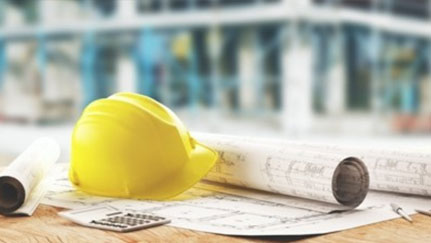Pre-construction keys to preventing water damage

Before construction work begins at your jobsite, it’s important to understand the existing water damage hazards and what can be done to mitigate those risks.
Controlling water damage losses on the job-site requires focus in all phases of construction. One important phase that is often overlooked is pre-construction. This article focuses on key areas and best practices to address during pre-construction activities.
Constructability reviews
Pre-construction reviews are a critical component in reducing design errors, omission and conflicts. In addition, a good constructability review process can save the owner time and money, reduce re-work and reduce potential liability of the contractor by uncovering critical omissions and ambiguities prior to the start of construction. The first step is to assemble a team which could include a constructability lead, engineers, design team, project managers, foreman and third-party representatives. The team should review draft construction plans, specifications and proposed schedules. Specific attention should be allotted to reviewing waterproofing design features, topography, adjacent exposures, schedules as it relates to weather, etc. Consider using constructability software that can help identify design clashes, review designs in context with 2D or 3D drawings and assist in visualizing design changes.
Water monitoring system
Incorporate individual water, moisture, humidity and temperature sensors into your bid. Establish parameters for how many sensors to source, where sensors will be placed, how they will communicate and who will monitor. Target high risk areas such as: basements, crawl spaces, boiler rooms, data and electrical equipment areas, elevator shafts, etc.
Thoroughly screen and vet waterproofing professionals
To ensure adequate waterproofing for your construction project, you should conduct enhanced screening of contractors involved in waterproofing activities. Contractor screening can include, but does not have to be limited to: experience, training, certifications, awards, references, industry groups, bond complaints, lawsuits, do they offer warranties, etc.
Ensure the proper selection of sealants for the job
Sealants are a critical line of defense to preventing water damage. Ensure sealants meet design specifications. Consider consulting sealant manufacturers to help select the proper sealant. Conduct adhesion tests and ensure sealants are compatible with materials. Verify adequate training and product knowledge for sealant installers.
Material submittal process
To help verify materials meet design specifications and parameters, create a material submittal process that should be followed by trades on the jobsite. This could include product cut sheets, specifications, shop drawings, model numbers, safety data sheets, etc. This is especially important for waterproofing materials and water/weather-related building components. All materials should be logged and forwarded to architects/engineers for approval.
Link: Sample Material Submittal Log
Include functional water penetration tests into the construction bid
Consider professional water penetration testing of windows, skylights and doors is included into the construction bid or verify that the cost and service will be absorbed by the owner. Test should be conducted in accordance relevant standards to include, but not limited to: ASTM E331, ASTM E1105, AAMA502 and AAMA 503.
Require mock-ups of exterior wall systems and or window assemblies
To ensure proper and consistent installation of window, door and exterior wall systems, require a mock-up to be developed. Mock-ups can be built offsite or provided on-site as visual representations and testing subjects. Mock-ups provide the owner an opportunity to see what the finished product will look like prior to installation, but more importantly it allows for problems to be discovered prior to install, provides testing opportunities and provides a benchmark to establish technical, quality and aesthetic standards for the project. Ensure the designers provide the requirements for the mock-up, and determine testing and performance requirements for the assembly. Testing can include: water penetration, air infiltration, thermal cycling and condensation resistance. Ensure all testing entities have the proper experience and qualifications.
